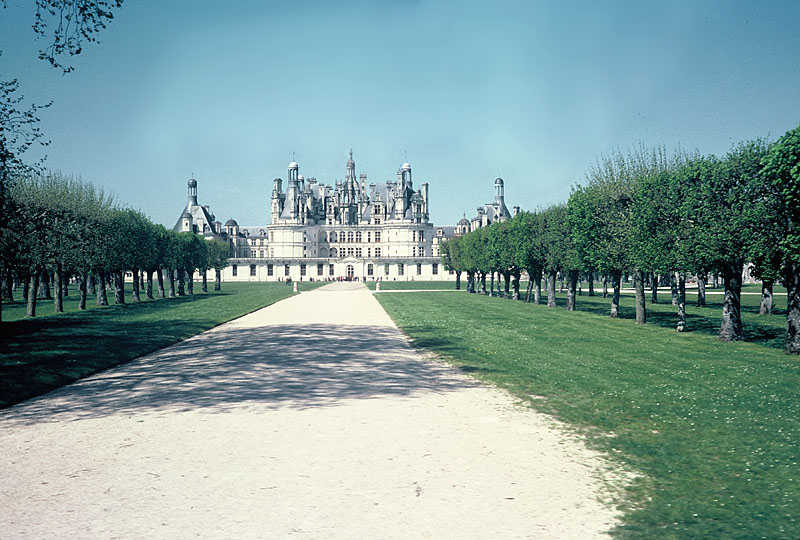
View of Chateau de Chambord. Chambord is the largest of the Loire Chateaux and built on a scale that foreshadowed the Chateau of Versailles. Ordered by King Francis I who liked to hunt in the surrounding forest, the exterior was completed in 1538 and the interior took over twenty more years to be finished. The Chateau is a jewel of the Renaissance, the result of a real mathematization of architecture (Jean Jacquart); it comprises 440 rooms, 365 fireplaces, 13 main flights of stairs and 70 backstairs.
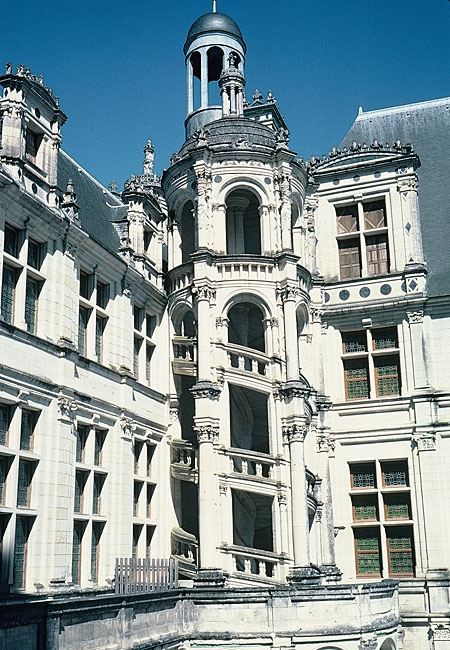
Double staircase at Chateau de Chambord. This special staircase, which was conceived by Leonardo da Vinci, stands at the intersection of the cross by the four guardrooms of the Chateau. The two flights of steps spiral around each other from the ground floor to the roof terrace. The stonework at the center and round the outside is pierced by many openings so that one can see from one flight across to the other. (Chambord is the largest of the Chateau of the Loire and was built by Francis I to serve as a palace for pleasure when he hunted).
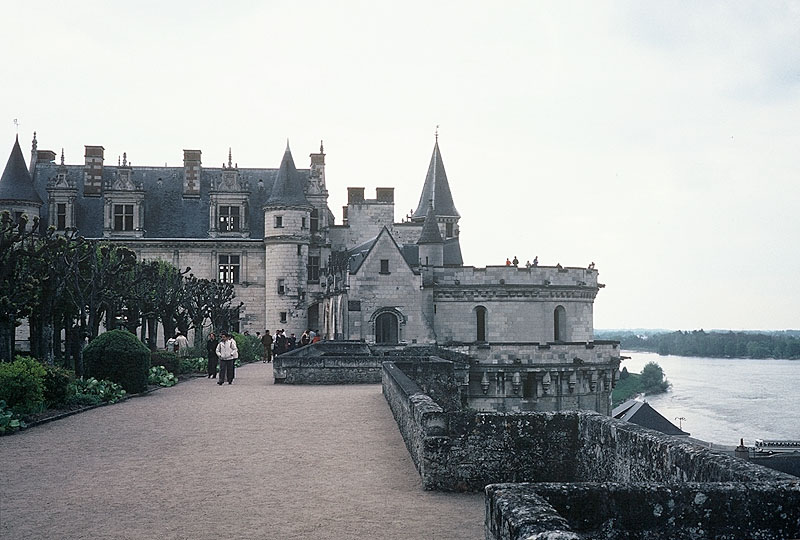
Chateau d’Amboise with Loire on the right. The 1400s were the Golden Age of the bridge town of Amboise in the Loire Valley region. The first French Chateau of the Renaissance was built and finished by Charles VIII. The roof overlooking the Loire reflects a Gothic roof, yet King Charles brought in many architects, artists, and sculptors from Italy to reflect the Renaissance influence before troops of later French kings almost destroyed it.
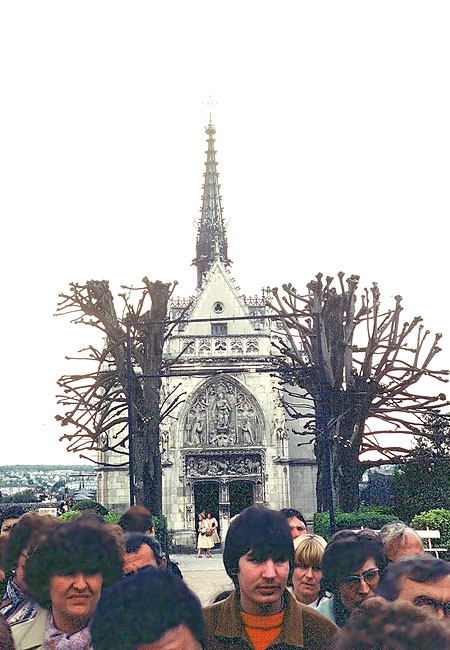
Façade of St. Hubert Chapel, Chateau d’Amboise. The jewel of flamboyant Gothic architecture is set astride of the fortified walls and is all the remains of the buildings which once lined the ramparts. The transept houses the tomb of the great artist Leonardo da Vinci who died at Amboise in 1519.
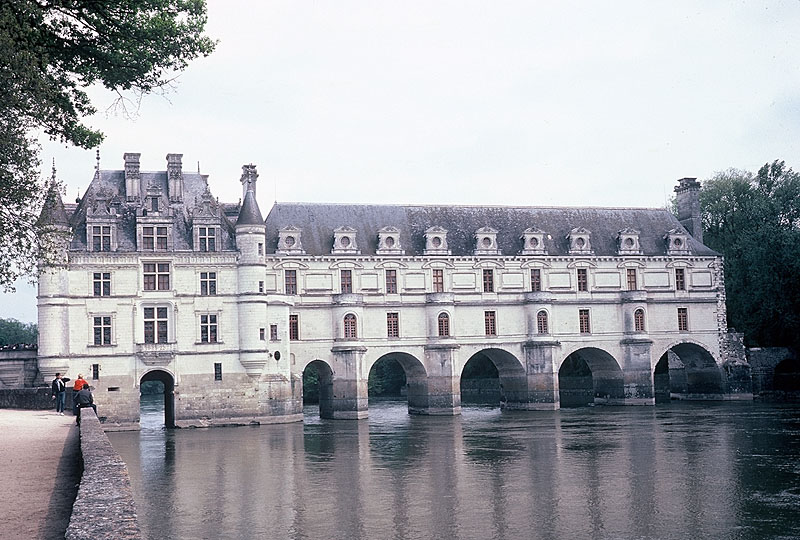
Chateau de Chenonoceau on Cher River. The beautiful chateau stretches across the Cher River in a very harmonious natural setting of water, greenery, gardens, and trees. To this is added the elegance of the chateau’s architecture, interior décor, and magnificent furniture. A grand, wide avenue of plane trees leads to the chateau. The chateau was completed in 1521 under King Francis I who used the chateau as a hunting lodge (just as he did Chambord). The main protagonists in the history of this chateau, were women, be they royal wives, mistresses, or queens in tales both happy and sad. When Catherine de Medici was once the owner, she laid out the gardens to the west and put on a huge party for the arrival of Francois II and Mary Stuart and a more sumptuous one for Charles IX. No expense was spared at these festivities which included banquets, dances, fancy dress balls, fireworks, fireworks, and even a naval battle over the Cher.
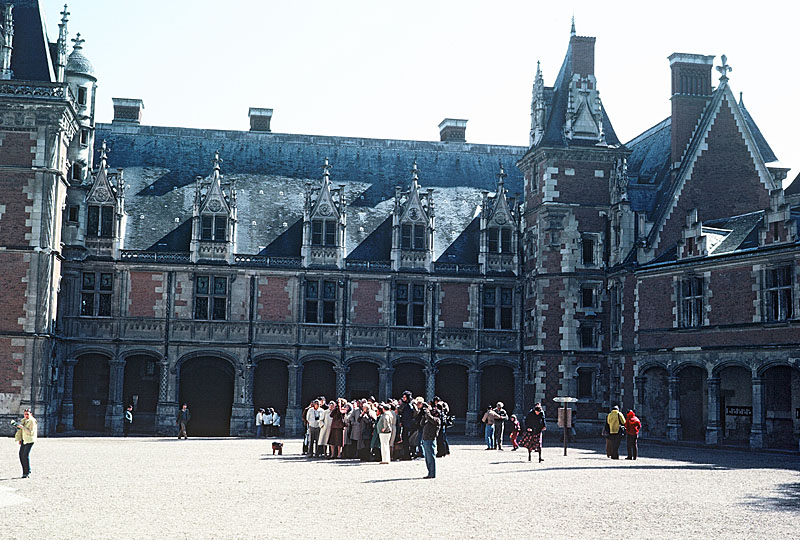
View of courtyard of Chateau de Blois. This is a chateau of several wings that was built in several stages over a three hundred year period. There are influences of medieval , flamboyant Gothic , Italian Renaissance, and finally Classical styles. The courtyard reflects Italian Renaissance style. Kings Louis XII and Francois I and Gaston d’Orléans all had a hand in shaping this royal castle to reflect the image of their eras. In medieval times, one of the counts of Blois married the daughter of William the Conqueror and their son, Stephen, later became king of England in the twelfth century. Then the court of Orléans was held at Blois. At the turn of the sixteenth century, Louis XII became king of France and Blois became the royal residence. The assassination of the Duke of Guise, the rival of King Henri III, is a famous story of intrigue in the chateau when twenty nobleman murdered the Duke. A few decades later, Marie de Medici was banished to Blois by her son, Louis XIII, when there was a little court in exile led by Cardinal Richelieu. Cardinal Richelieu helped her escape. In 1626, Louis XIII gave the country of Blois and the duchy of Orléans to his brother, Gaston d’Orléans. Gaston d’Orléans was involved in scheming against Richelieu and later in the Fronde against Cardinal Mazarin, but commissioned a new wing of the chateau and embellished its gardens.
